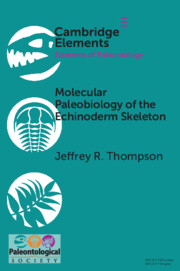Primary mesenchyme cells (PMCs) are skeletogenenic cells that produce a calcareous endoskeleton in developing sea urchin larvae. The PMCs fuse to form a cavity in which spicule matrix proteins and calcium are secreted forming the mineralized spicule. In this study, living sea urchin embryos were stained with fluorescently conjugated wheat germ agglutinin, a lectin that preferentially binds to PMCs, and the redistribution of this fluorescent tag was examined during sea urchin development. Initially, fluorescence was associated primarily with the surface of PMCs. Subsequently, the fluorescent label redistributed to intracellular vesicles in the PMCs. As the larval skeleton developed, intracellular granular staining diminished and fluorescence appeared in the spicules. Spicules that were cleaned to remove membranous material associated with the surface exhibited bright fluorescence, which indicated that fluorescently labelled lectin had been incorporated into the spicule matrix. The results provide evidence for a cellular pathway in which material is taken up at the cell surface, sequestered in intracellular vesicles and then incorporated into the developing spicule.

